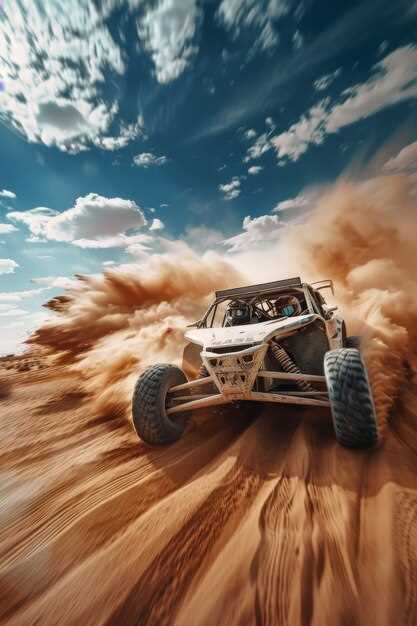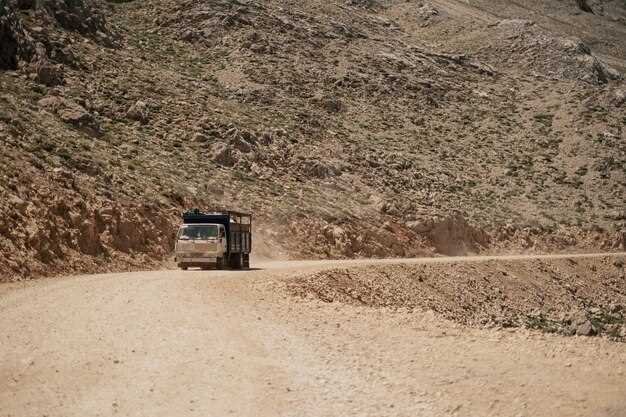
When it comes to off-road racing in the arid landscapes of the desert, having a properly prepared vehicle is essential for success. While many vehicles can navigate through sands and rocky trails, a race-ready Jeep is specifically engineered to withstand the unique challenges of desert racing. This comprehensive guide will take you through the necessary steps to prep your Jeep for high-speed adventures in the unforgiving terrain.
From performance upgrades to safety features, all aspects of building a competitive and reliable desert racing Jeep will be covered. A well-prepared Jeep not only enhances your chances of finishing the race but also ensures a safer experience as you tackle rugged paths ahead. Each phase of the prep process will give you valuable insights into the modifications that can transform your stock Jeep into a formidable contender on the race track.
Join us as we delve into the world of desert racing and explore how to effectively enhance your Jeep’s capabilities. With the right guides, tools, and techniques, you will be equipped to take on the challenges of the desert and come out faster and stronger than ever before. Let’s get started on this exciting journey to build your ultimate desert race-ready Jeep!
Choosing the Right Jeep Model for Desert Racing
Selecting the appropriate Jeep model for desert racing is crucial for successful performance and durability. Key models to consider include the Jeep Wrangler, Jeep Gladiator, and Jeep Cherokee, each offering distinct features for race prep in arid conditions.
The Jeep Wrangler is renowned for its off-road capabilities, featuring a robust chassis and enhanced suspension systems. Its lightweight design allows for better handling on sandy terrains, making it an ideal choice for desert races. Upgrading its tires and suspension can significantly improve traction and stability while maintaining agility.
Next, the Jeep Gladiator combines the utility of a truck with the off-road prowess of the Wrangler. Its longer wheelbase provides additional stability at high speeds, essential for navigating desert bumps and dunes. The Gladiator also offers a powerful engine lineup that can handle the rigors of racing, giving it an edge in performance during long races across challenging landscapes.
Although not as popular as the other models, the Jeep Cherokee can also be adapted for desert racing. With its advanced four-wheel-drive system and lightweight design, it can be modified for better ground clearance and durability. However, racers should be cautious about its speed capabilities compared to the Wrangler and Gladiator.
When choosing a Jeep for desert racing, consider engine power, weight, and aftermarket support for modifications. Proper race prep includes assessing each model’s potential for endurance and adaptability to various desert terrains. Prioritize models that have proven performance records in competitive settings to ensure a successful racing experience.
Upgrading the Suspension for Off-Road Performance
When building a desert race-ready Jeep, upgrading the suspension is crucial for enhancing off-road performance. Desert terrains present unique challenges, including sand dunes, rocky paths, and uneven surfaces. A properly tuned suspension will help your Jeep maintain stability, control, and comfort during high-speed desert races.
The first step in upgrading your suspension is selecting the right system. Consider a long-travel suspension kit that allows for greater wheel articulation. This feature is essential for navigating through rough terrain while keeping the tires in contact with the ground, maximizing traction and minimizing the risk of getting stuck.
Investing in high-quality shock absorbers is equally important. Look for remote-reservoir shocks that provide better heat dissipation and additional oil volume. This design helps maintain performance over long-distance races, ensuring that your Jeep can handle the varying demands of the desert landscape without overheating or losing damping performance.
Incorporating adjustable coilovers into your upgrade can also be beneficial. They allow you to fine-tune the ride height and damping settings based on specific race conditions. This adaptability is essential for optimizing your Jeep’s performance during different phases of a race, whether it’s tackling sharp corners or accelerating on flat stretches of sand.
Another crucial aspect is adding heavy-duty sway bars to improve handling stability during high-speed maneuvers. A stiffer sway bar setup will help reduce body roll, making your Jeep more responsive to steering inputs while maintaining traction over uneven surfaces.
Lastly, don’t forget to include proper alignment and adjustment after installing your upgraded suspension components. Ensuring that your Jeep is correctly aligned will improve tire wear and handling characteristics, which are vital for any successful desert race. By focusing on these suspension upgrades, you’ll create a Jeep that can tackle any challenge the desert throws at you.
Selecting the Best Tires for Sand and Rough Terrains
When preparing your Jeep for a desert race, selecting the right tires is crucial for optimal performance on sandy and rough terrains. The right tires can mean the difference between navigating smoothly through dunes and getting stuck in the sand. Below are essential factors to consider when choosing your desert tires:
- Tire Width:
Wider tires offer a larger surface area, which helps distribute the vehicle’s weight more evenly across the sand. This reduces the likelihood of sinking and promotes better traction.
- Tire Pressure:
Lowering tire pressure increases the footprint of the tire, enhancing floatation on soft sand. However, it is essential to strike a balance, as over-deflation can lead to rim damage.
- Tread Design:
Opt for tires with an aggressive tread pattern that can grip uneven surfaces. Specifically, tires designed for sand should feature wider, paddled lugs that help propel the vehicle forward.
Additionally, consider the following options:
- Sand-Specific Tires:
Tires that are specifically designed for sandy conditions provide optimal performance. These often have unique tread patterns that facilitate better movement in soft sand.
- All-Terrain Tires:
If versatility is important, all-terrain tires can perform reasonably well in sand while also handling rocky paths. However, they may not offer the same performance as sand-specific options.
In summary, adequate prep and careful selection of the right tires for your Jeep can enhance your performance in desert races. Be sure to consider the tire width, pressure, tread design, and specific tire types to maximize your off-road capability.
Modifying the Engine for Enhanced Power and Durability

Upgrading your Jeep’s engine is a critical step in preparing it for desert racing. This process not only boosts performance but also improves durability in extreme conditions. Below are key modifications to consider.
1. High-Performance Air Intake System
Installing a high-performance air intake system increases airflow to the engine, resulting in better combustion efficiency. This modification can significantly enhance throttle response and overall power output, crucial for navigating challenging race terrains.
2. Performance Exhaust System
A performance exhaust system reduces back pressure, allowing exhaust gases to exit more freely. This modification can lead to noticeable improvements in horsepower and torque, essential for quick acceleration and speed on desert tracks.
3. Engine Tuning
Tuning the engine’s ECM (Engine Control Module) is vital for optimizing performance. Custom tuning adjusts fuel maps and ignition timing to maximize power and efficiency, ensuring your Jeep can handle the demands of desert racing.
4. Upgrade the Fuel System
To support enhanced power levels, upgrading the fuel system is necessary. Consider installing high-flow fuel injectors and a performance fuel pump to ensure adequate fuel delivery during race conditions. This ensures that the engine performs optimally under load.
5. Enhanced Cooling System
Improving the cooling system is critical for maintaining engine durability in high heat environments. Installing a larger radiator and an upgraded thermostat can help prevent overheating, which is vital for long races in the desert.
6. Strengthen Internal Components
For additional durability, consider upgrading internal engine components such as pistons, connecting rods, and crankshafts. Forged components are more resistant to stress and heat, making them ideal for high-performance applications.
These modifications are essential when prepping your Jeep for race conditions in the desert. Prioritizing power and durability enhances performance, leading to a more competitive racing experience.
Installing a Roll Cage for Safety in Extreme Conditions

For those preparing their Jeep for desert racing, safety is paramount. Installing a roll cage is an essential step in securing your vehicle against potential rollovers and impacts, which can occur in extreme racing conditions. A well-designed roll cage significantly enhances the structural integrity of your Jeep, providing crucial protection for both the driver and passengers.
Before starting the installation, choose a high-quality roll cage suitable for racing. The material, typically made from tubular steel, must meet safety standards set by racing organizations. Ensure proper measurements of your Jeep’s interior to determine the appropriate design and fit for your roll cage.
Begin the installation by removing any components that obstruct the area where the roll cage will be placed. This often includes the seats, center console, and, in some cases, the dashboard. Following the roll cage manufacturer’s guidelines, carefully position the components in the designated areas, ensuring they do not interfere with seating or safety harness installations.
Use a high-strength welder to securely attach the roll cage to the Jeep’s frame. Pay special attention to the connection points, which are critical for maintaining the cage’s integrity during a race. Ensure that all welds are strong and clean, as this will reduce the risk of failure during extreme maneuvers.
Once the cage is installed, reinforce it with additional support bars if necessary. These bars can enhance the roll cage’s ability to withstand high-impact forces, particularly in challenging terrain. Finally, paint or powder-coat the roll cage to prevent rust and damage from sand and moisture typically found in desert environments.
Remember to evaluate the ergonomics of your Jeep after the installation. Ensure that you can comfortably enter and exit the vehicle and that there is sufficient space for safety gear. A successful roll cage installation not only ensures racer safety but also boosts confidence when tackling the toughest desert trails.
Essential Tools and Equipment for Race Preparation
Preparing your Jeep for a desert race requires a comprehensive approach, ensuring that you have all the necessary tools and equipment on hand. Below is a detailed list of essential items that will help you efficiently prep your vehicle and enhance its readiness for the race.
| Tool/Equipment | Purpose |
|---|---|
| Torque Wrench | Ensure all bolts, especially suspension and axle components, are tightened to the manufacturer’s specifications. |
| Jack and Jack Stands | Facilitate safe lifting of the vehicle for tire changes and undercarriage inspections. |
| Air Compressor | Adjust tire pressures quickly to suit different terrain conditions during the race. |
| Basic Hand Tools | Includes wrenches, pliers, and screwdrivers for general repairs and adjustments pre- and post-race. |
| Off-Road Jack | Designed to lift vehicles in rugged terrain; crucial for changing tires in remote areas. |
| Portable Battery Charger | Maintains power for the Jeep’s electrical systems, vital in case of battery failure. |
| First Aid Kit | Essential for addressing minor injuries sustained during the race or preparation. |
| Recovery Gear | Includes tow straps, shackles, and a winch for self-recovery during difficult situations on the course. |
| Fire Extinguisher | Mandatory safety equipment for preventing and managing fire hazards. |
| Navigation Tools | GPS devices or maps to navigate the race course effectively. |
Investing in these essential tools and equipment will not only enhance your race preparation but also contribute to a safer and more successful race day experience. Ensure that you regularly check and maintain your tools to keep them in optimal condition.




